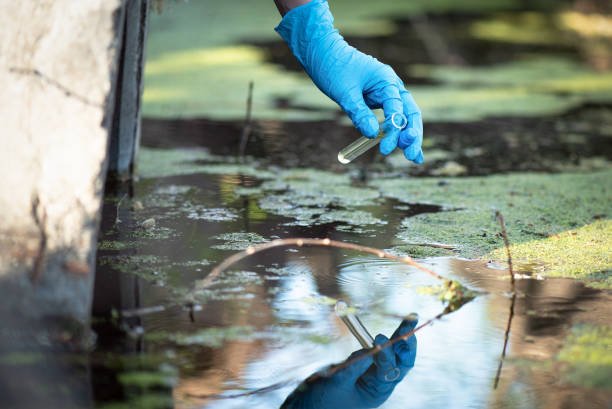On this page we explain how inconsistent maintenance of water infrastructure may contribute to the development of waterborne diseases.
Safe and reliable water supply is a cornerstone of public health. However, the lack of proper and consistent maintenance of water infrastructure can greatly contribute to the development and spread of waterborne diseases. Let’s explore the link between water infrastructure maintenance and waterborne diseases and why this issue demands urgent attention.
How Inconsistent Maintenance of Water Infrastructure May Contribute to the Development of Waterborne Diseases
Inconsistent maintenance of water infrastructure may contribute to the development of waterborne diseases due to several reasons. Firstly, contamination can occur at the source if reservoirs or water tanks are not regularly cleaned and inspected, allowing harmful bacteria and parasites to multiply. Secondly, pipes and equipment can deteriorate over time, leading to cracks and leaks that allow contaminants into the water supply or cause harmful substances to leach from corroded pipes. Lastly, if water treatment facilities are not properly maintained, they may not effectively remove or neutralize all harmful substances and organisms, leading to inadequately treated water reaching consumers and increasing the risk of waterborne diseases.
FACTS
- “Globally, at least 2 billion people use a drinking water source contaminated with feces.” – World Health Organization
- “Contaminated water can transmit diseases such diarrhea, cholera, dysentery, typhoid, and polio. Contaminated drinking water is estimated to cause 485,000 diarrheal deaths each year.” – World Health Organization
- “Unsafe water, sanitation and hygiene (WASH) conditions are one of the leading causes of disease and death in low-income countries.” – Centers for Disease Control and Prevention (CDC)2.
- “The World Health Organization estimates that 58% of that burden, or 842,000 deaths per year, is caused by a lack of safe drinking water supply, sanitation, and hygiene.” – Centers for Disease Control and Prevention (CDC)
- “As many as 12% of the world’s population uses water from unimproved and unsafe sources.” – UNICEF
Water Infrastructure and Its Role
Water infrastructure encompasses systems for water treatment, storage, and distribution. They ensure that water accessed by the public is clean, safe, and free from disease-causing pathogens. This infrastructure includes water treatment facilities, pipes, pumps, valves, and reservoirs.
When functioning optimally, water infrastructure effectively filters and disinfects water, reducing the risk of waterborne diseases such as cholera, dysentery, typhoid, and polio. Conversely, the failure of these systems due to inconsistent or improper maintenance can have dire public health consequences.
Inconsistent Maintenance and Waterborne Diseases
Contamination at Source
Inconsistent maintenance can lead to the contamination of water at the source. For instance, without regular cleaning and inspection, harmful bacteria and parasites may proliferate in reservoirs or water tanks. Over time, this can lead to the water becoming a breeding ground for disease-causing organisms.
Deterioration of Pipes and Equipment
Pipes and equipment can deteriorate over time, especially without consistent maintenance. Cracks and leaks in pipes can allow contaminants to infiltrate the water supply. Conversely, rusty and corroded pipes can leach harmful substances into the water.
Inadequate or Inefficient Treatment
Water treatment facilities require regular maintenance to function effectively. Without it, the treatment process may not effectively remove or neutralize all harmful substances and organisms. This can result in inadequately treated water reaching consumers, thereby increasing the risk of waterborne diseases.
The Impacts and the Way Forward
The impacts of waterborne diseases can be devastating, leading to severe illness and even death, particularly among vulnerable populations like children, the elderly, and those with compromised immune systems.
Ensuring consistent maintenance of water infrastructure is a critical step in preventing the spread of these diseases. This includes regular inspection and cleaning of reservoirs and tanks, timely replacement or repair of deteriorating pipes and equipment, and ensuring optimal operation of water treatment facilities.
Moreover, investing in modern, resilient water infrastructure systems can help prevent failures that lead to waterborne disease outbreaks. Policymakers and water utilities should prioritize funding and resources for these essential services. Simultaneously, community education about water safety and the importance of consistent infrastructure maintenance can also play a crucial role.
Conclusion
Inconsistent maintenance of water infrastructure plays a significant role in the development of waterborne diseases. It is a pressing public health issue that requires coordinated action from policymakers, water utilities, and communities. By prioritizing and ensuring regular and thorough maintenance of water infrastructure, we can safeguard our communities from the devastating impact of waterborne diseases.

